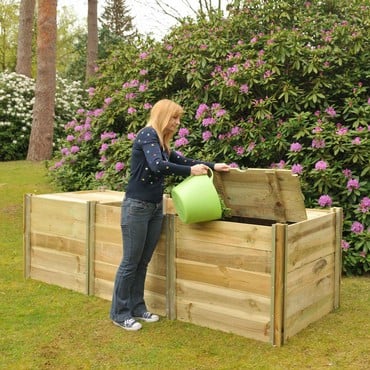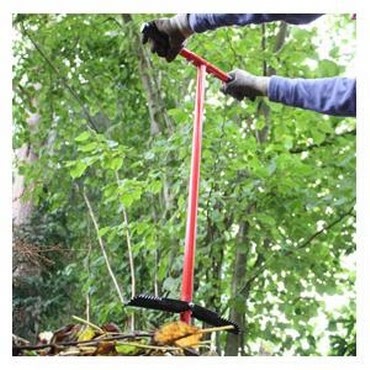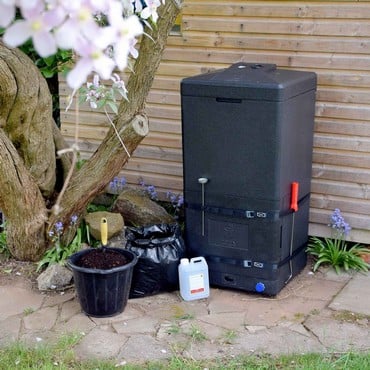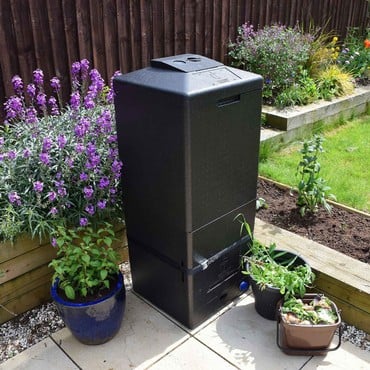Guide to composting
Home composting can seem overwhelming and mysterious, but in reality, it’s a simple process that almost everyone can use effectively. With little more than fallen leaves and kitchen scraps you can make dark, nutrient-rich compost that will work wonders for your garden. What’s more, you’ll be helping the environment in the process too.
Getting started
A simple way to create your own compost is to simply pile plant material up in a heap, leaving it to break down. However, for the best results we’d recommend using a compost bin. This method keeps the material neat and tidy, while retaining moisture and heat that are vital to the composting process.
If your outside space is plentiful and you’re spoilt for choice, then you should consider placing your compost bins somewhere with a stable temperature, so the fungi and bacteria can work consistently. The warmer the location the faster the compost will work; however, you should avoid positioning your bin near a shed, fences, or buildings.
Your compost bin should have an open base, a lid to keep the heat in and a door at the bottom for removing compost. A soil base allows drainage and ensures worms and other beneficial invertebrates can make their way into the compost, speeding up the process.

The ingredients
The organic materials that go into your bin are divided into two types ‘greens and browns’. Greens are wet materials rich in nitrogen, while browns are generally dry and rich in carbon. You’ll need a mix of these to make compost.
Always start your pile with a generous layer of brown matter and then continue to alternate the layers of greens and browns. Remember to always cover any greens with a generous layer of browns to prevent odours and deter unwanted pests. Use the below list to ensure you get the most out of your heap.
Tip: the smaller you break down your material, the quicker it will compost.
What to compost
Green:
- Coffee grounds
- Eggshells
- Fruit and veggie scraps
- Grass cuttings
- Fresh weeds
- Fresh leaves
- Garden prunings
Brown:
- Dry leaves
- Twigs/branches
- Straw/hay
- Sawdust/wood shavings
- Shredded paper/cardboard
What not to compost
- Cooked food
- Citrus peel
- Meat
- Dairy products
- Dog/cat waste
- Diseased plants
- Glossy magazines
- Large branches (unless you break them down beforehand)
Maintaining your pile
After adding food scraps or garden waste to your pile, be sure to top it with a layer of brown matter. If you do not add enough browns, your compost will be too wet and break down more slowly. Once autumn arrives, it’s a good idea to bag up all the crunchy leaves, so you can use them in your compost year-round.
Turning your compost regularly ensures you get the most out of your pile as fast as possible. Expert composters consider regular mixing and aerating essential in the composting process. This can be done simply enough with a compost aerator. If you’re lucky enough to have a triple compost bin, this is easily achieved by turning the compost from one bin into the next.
Hot composting
Alternatively, a hotbin composter can create crumbly brown compost in a matter of weeks. The hotter temperatures produced by a hotbin provides the necessary environment, unlike traditional cold composting heaps, to break down a wider variety of waste. In addition to grass clippings, you can add cooked leftover food, fish, meat, chicken bones and dog waste.
Using your finished compost
Before spreading your new compost across your garden, you need to make sure its ready to use. Mature compost should be a dark, rich colour with a crumbly and smooth texture. It should also have a sweet, earthy fragrance.
Once you’re confident it’s ready… consider using your wonderful new compost for the following:
- Feed your bulbs
- Top dress beds
- Use as mulch
- Enrich new borders
- Feed your lawn
- Store it until you need it































